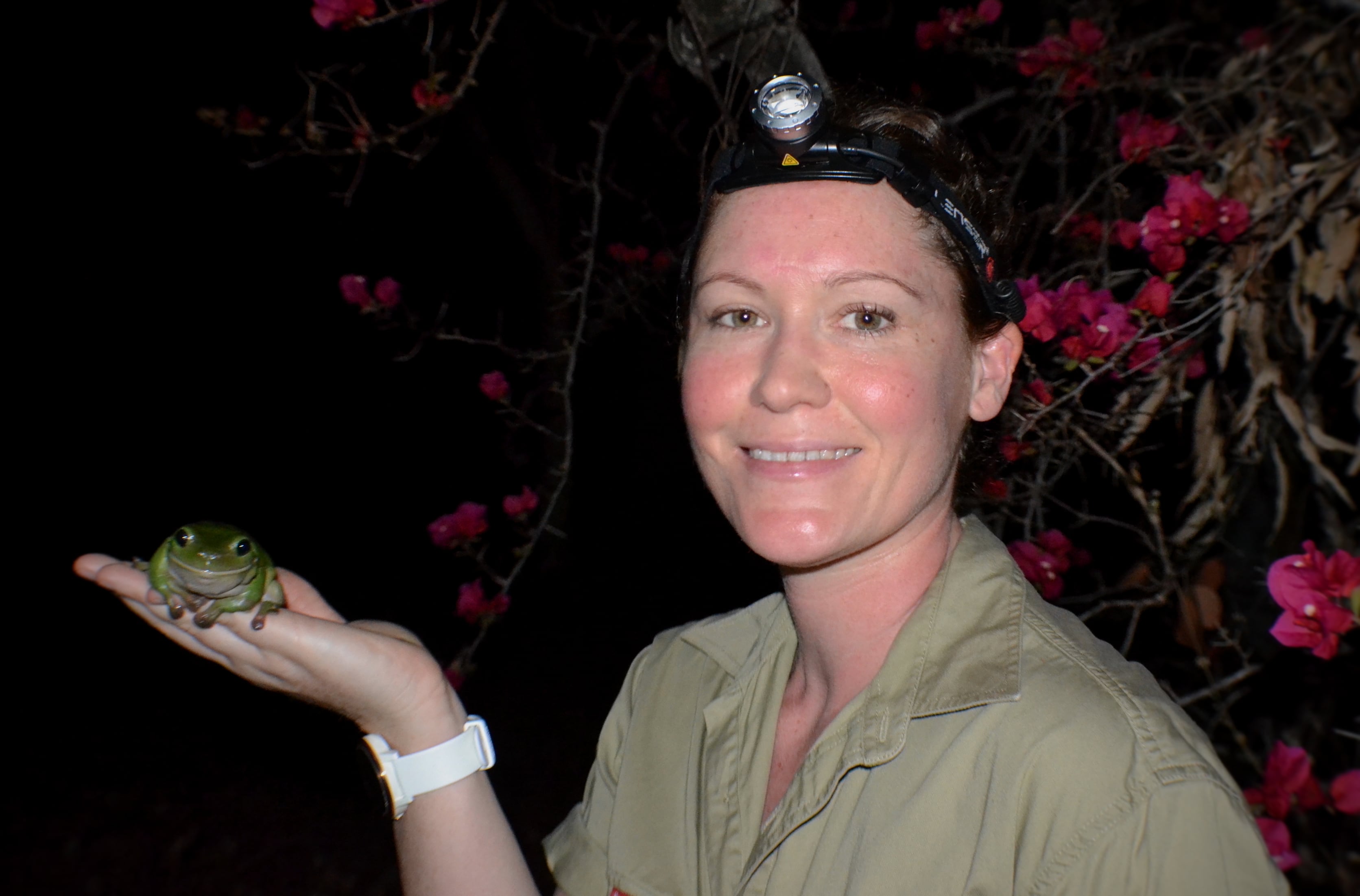The wondrous world of wildlife first captivated herpetologist Debbie Bower during high school work experience with the Queensland National Parks and Wildlife Service.
"It resonated with me straight away and I knew I wanted to work with animals for the rest of my life," says the now head of the Laboratory of Applied Zoology and Ecosystem Restoration (LAZER) at the University of New England.
Debbie completed a Bachelor of Science majoring in zoology and a PhD in Applied Ecology and has published over 30 scientific papers on the management of invasive species and conservation of threatened reptiles and amphibians, but is herself a rarity.
"Herpetology is very male dominated, especially in the upper levels," Debbie says. "Snakes and goannas are very macho animals. There have been times when I have been the only female in a team of 10 doing field work. It's amazing learning about animals capable of defending themselves by squirting blood from their eyes or species that can drink through their feet; I would love to see more women working in this field."
However, Debbie counts herself among the lucky ones. "I was really fortunate to have a female supervisor when I did my honours program," says the LGBTQI and Women in STEM activist, who works to increase equality in environmental science."She also became my boss when I went on to do my postdoctoral research and has had a huge impact on my career. It made a big difference having someone who had been in my shoes, who looked like me, who I could share my experiences with as a female. She is still one of only a handful of female professors in herpetology in Australia."
Debbie, a Science and Technology Australia Superstar of STEM, says the International Day of Women and Girls in Science (February 11) is important to introduce to the next generation of young women to some of the amazing female role models working in science - women who don't put themselves forward nearly as much as their male counterparts.
"We still have a long way to go to encourage women and girls into scientific careers," Debbie says. "Every stage you go up in seniority in science you lose more women until you get to the top and there is a massive disparity. Not a lot of women are known for their scientific achievements and we want to change that so women in leadership positions becomes the norm.
"Women suffer more from imposter syndrome and negotiate worse deals than men in the workplace. One year out of completing their PhD in science, women earn one-third less than men."
And Debbie says it's not only women who lack representation and mentors. "It's also people of colour and people of different sexual orientations," she says. "It's about encouraging these different minority groups into science to produce the diversity of ideas, perspectives and backgrounds that improves the way that science is conducted, improves collaboration, and improves our chances of solving problems."
Change begins by demonstrating to younger women the range of career options available and then research institutions introducing mechanisms to tackle inequality.
"Women make equally capable scientists and should have every opportunity to contribute to addressing the world's big problems," Debbie says. "Mixed teams work better and produce better outcomes than single gendered teams."
Today, Debbie facilitates LAZER’s research, supervises a number of students and conducts her own research into how habitat destruction and disturbance affects reptiles and amphibians, which has taken her all over Australia and to Papua New Guinea, Madagascar and Jamaica.
"Science offers plenty of opportunities to travel and one of the best things about being a scientist is the freedom you have; you can follow what you are passionate about," Debbie says."Within LAZER we focus a lot on our freshwater systems because they are some of the most important and threatened habitats, and we work a lot with reptiles and amphibians because they are the lesser-loved species. We are trying to find ways to manage those species and their habitats better."
As well as enjoying dancing and playing her ukulele, Debbie is dedicated to community outreach - including frog hunts, frog dreamings and a weekly newspaper column - in the hope of inspiring an appreciation of nature and increasing equality in environmental science.
"These are fun ways to teach kids and are an important means of engaging young girls in science," she says. "I see it as part of me being visible in science, showing what a scientist looks like and demonstrating the thrill that you get when you conduct science. It's about showing what's possible."
International Day of Women and Girls in Science aims to achieve full and equal access to and participation in science for women and girls in support of a United Nations General Assembly resolution.According to a study conducted in 14 countries, the probabilities of female students graduating with a Bachelor’s degree, Master’s degree and Doctor’s degree in science-related field are 18%, 8% and 2% respectively. The percentages of male students are 37%, 18% and 6%.


